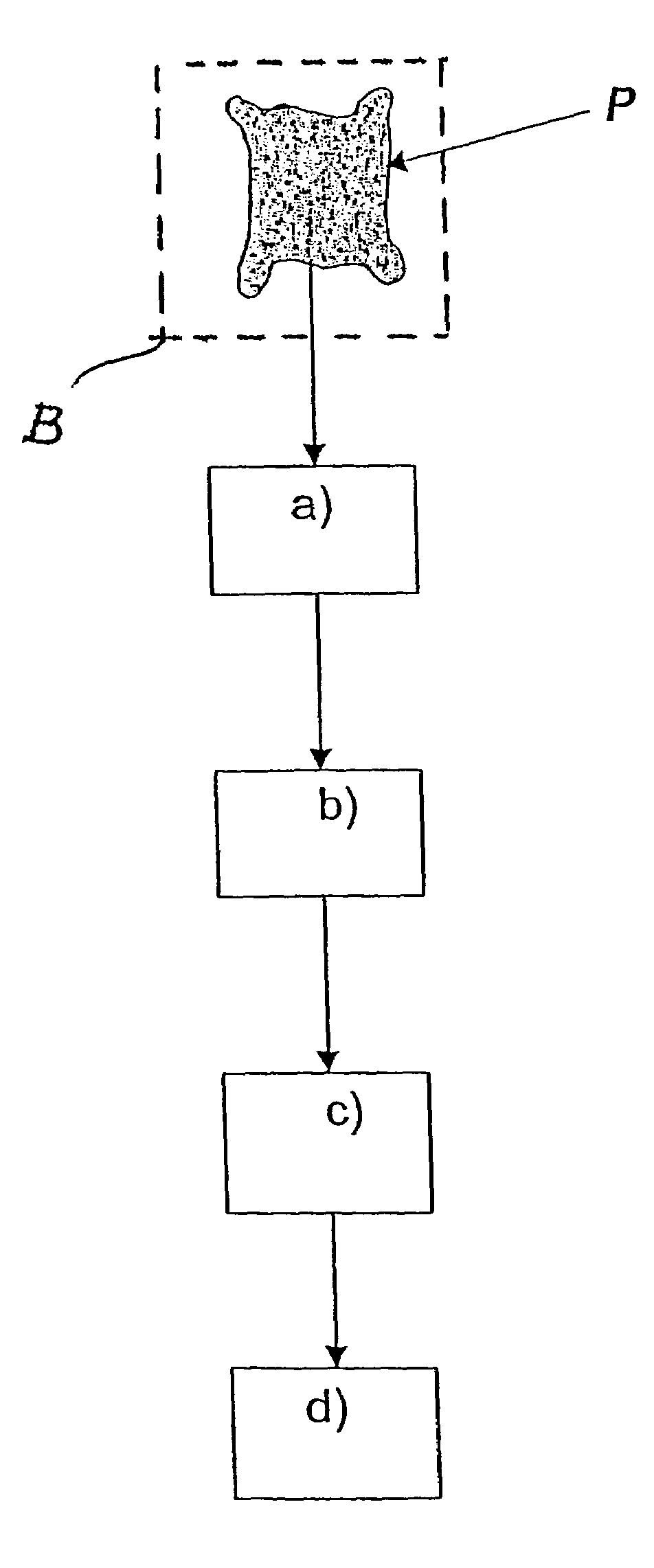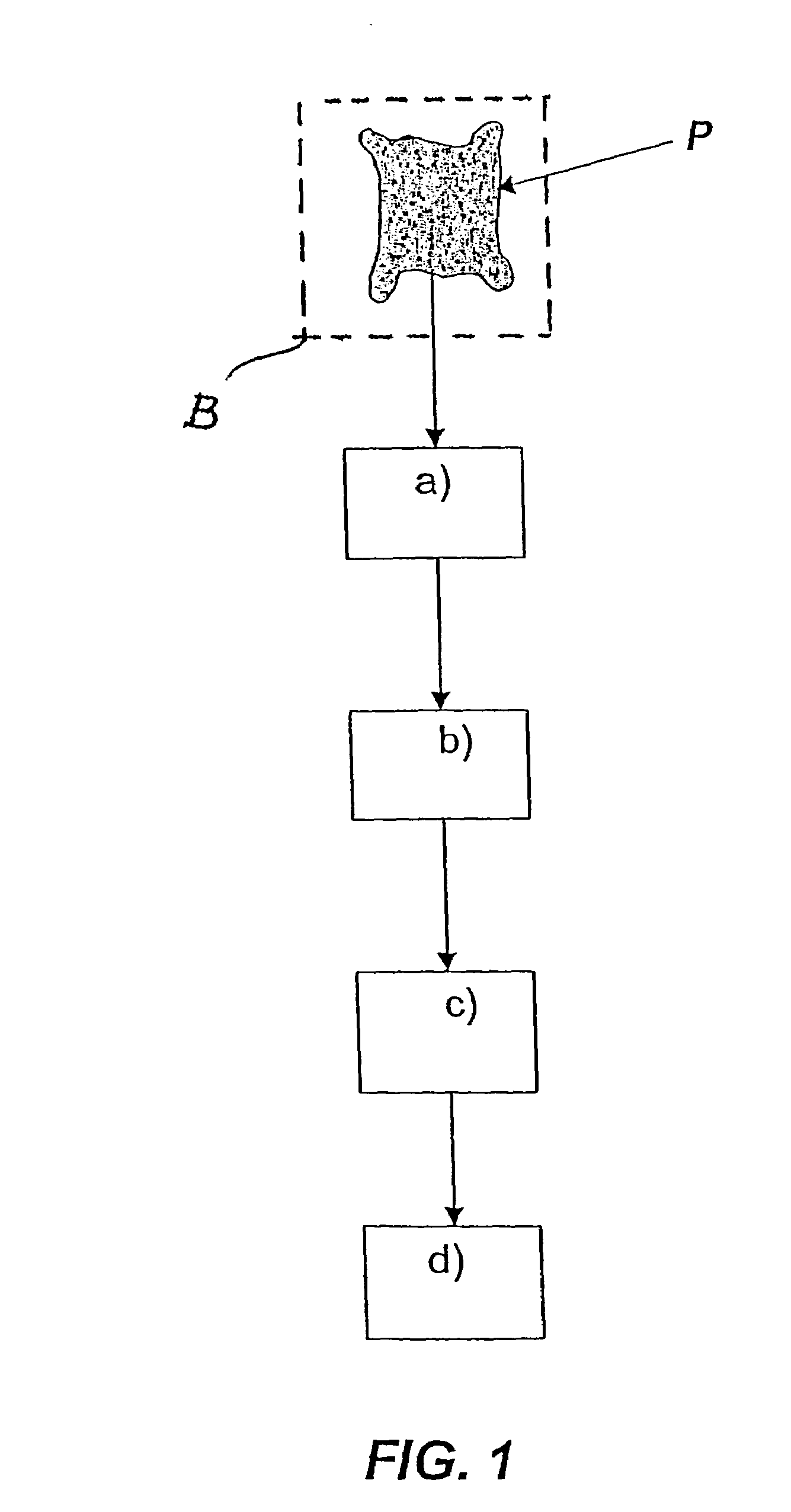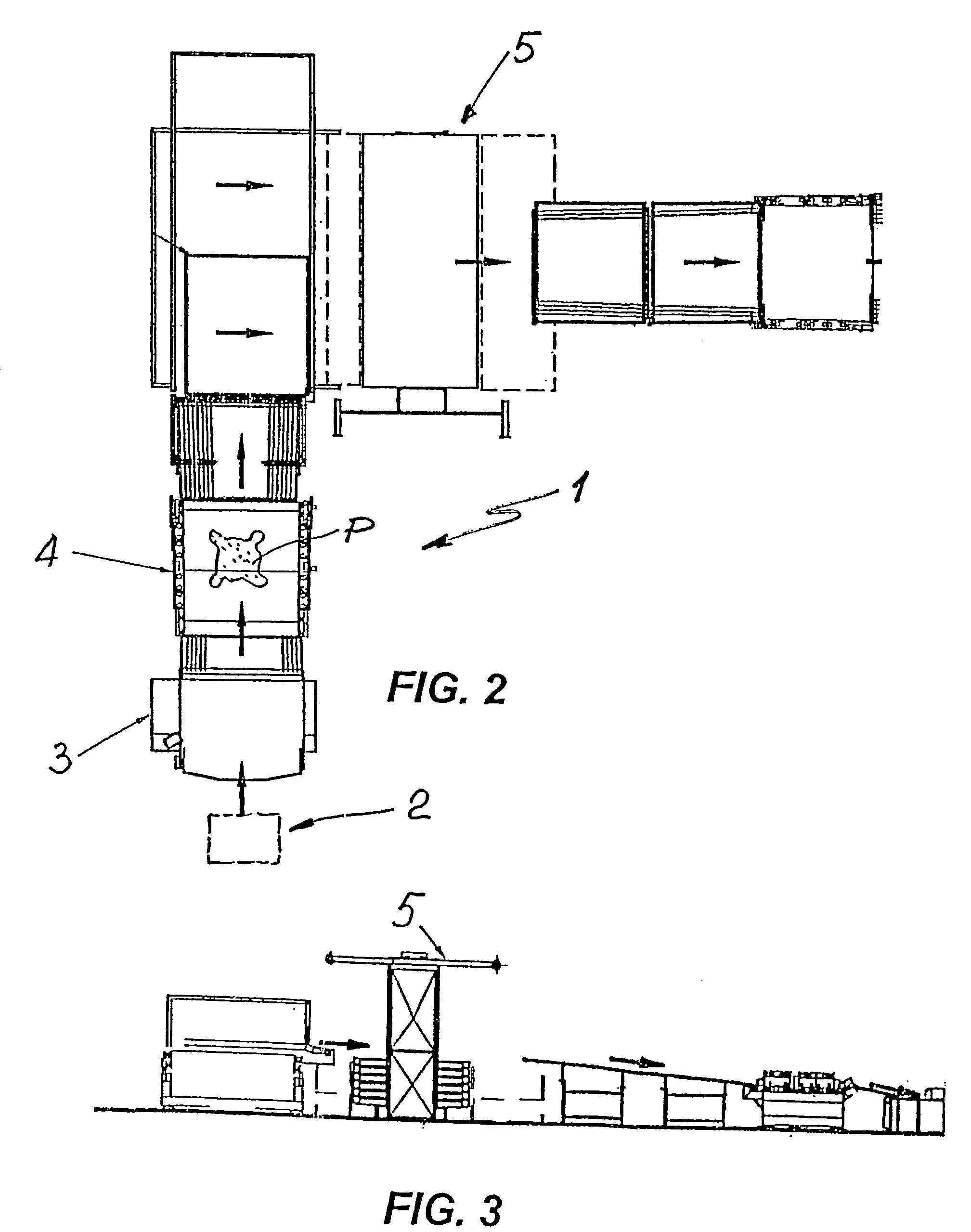Method and line for the continuous stretching of hides and other similar products
a technology of industrial hides and similar products, applied in the field of tanning, can solve the problems of reducing the quality of finished products, reducing the surface area, and requiring a large energy expenditure on the part of operators, and achieve the effect of increasing the surface area
- Summary
- Abstract
- Description
- Claims
- Application Information
AI Technical Summary
Benefits of technology
Problems solved by technology
Method used
Image
Examples
Embodiment Construction
[0025]With reference to the attached drawings, FIG. 1 shows a block diagram illustrating the method for stretching moist hides according to the invention. The method essentially comprises four steps, denoted respectively by a), b), c), d).
[0026]In step a), the hides P, which are removed from a tanning or retanning drum or from a grease-dressing bath, shown in schematic form by the letter B, have a residual relative moistness of between 85% and 100%.
[0027]In these conditions, the hides P are particularly pliable and lend themselves to being stretched with minimal risks of breakage or local damages, significantly reducing the risk of “blisters” and other local defects.
[0028]The hides are then subjected to a step b) consisting in partial drying, for example using traditional methods of wringing performed with a wringing machine or a felt stretching press. This step is regulated in such a way that the hides have a residual relative moistness with values of between 35% and 65%.
[0029]At t...
PUM
 Login to View More
Login to View More Abstract
Description
Claims
Application Information
 Login to View More
Login to View More - R&D
- Intellectual Property
- Life Sciences
- Materials
- Tech Scout
- Unparalleled Data Quality
- Higher Quality Content
- 60% Fewer Hallucinations
Browse by: Latest US Patents, China's latest patents, Technical Efficacy Thesaurus, Application Domain, Technology Topic, Popular Technical Reports.
© 2025 PatSnap. All rights reserved.Legal|Privacy policy|Modern Slavery Act Transparency Statement|Sitemap|About US| Contact US: help@patsnap.com



